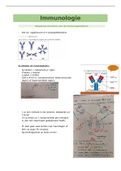Samenvatting
IT Governance Samenvatting
- Vak
- IT Governance
- Instelling
- Universiteit Antwerpen (UA)
Deze samenvatting bevat zowel de slides met mijn notities van in de les en eveneens een samenvatting van het handboek. Daarnaast worden de praktische informatie omtrent het examen en het groepswerk ook vermeld. Aarzel niet om mij te contacteren bij vragen.
[Meer zien]












